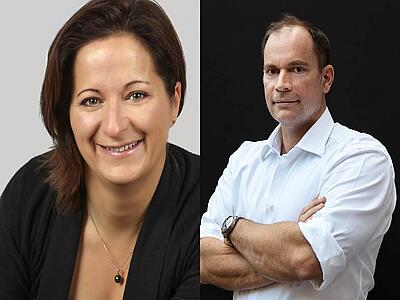Pressure, routine and hierarchical definition destroy the work-flow
Another flow-killer would be the fundamental mistake of ambiguously defined goals. Instead of getting rid of out dated structures, most of the time executives demand on those. In fact, it is unlikely that solutions pop up while sitting strictly at the desk. Most innovative ideas evolve when the mind is free. Flow also develops when boarders are broken down and we leave our comfort zone behind. Another problem is the ongoing exchange of employees from one department to another, without reconsidering whether the employee can contribute his knowledge and talent. Missing feedback, lack of communication, envy and obsession thwart the flow as well. Additionally, the focus remains on other things than the main goal. Lastly, most of the executive’s underestimate or ignore the importance and impact of the flow.
Global Topspeaker and sailing professional Dominik Neidhart knows how important flow is for a team. It needed three attempts for him and his team to finally win the legendary America’s Cup, the most ambitious sailing event in the world. In New Zealand he could celebrate with his team Alinghi an unexpected but thrilling underdog-victory. This success was drawn by many factors: Without clear communication, discipline, decisive leadership and the perfect flow they wouldn’t have been successful during the competition nor have had a rewarding preparation.
Based on the 150-year long history of the America’s Cup the Global Topspeaker illustrates in his enthusiastic lecture “Go hard or go home” that neither capital nor quantity matters. Elite sport on the sea without a protecting roof or solid ground is the high class of teambuilding, teamwork, policy and scheduling. The same is true for economy. Without teamwork no company is competitive. If the flow gets interrupted or not promoted, achieving a goal will nearly be impossible. Those goals must be defined clearly in order to simplify communication. It is also completely necessary to incorporate constructive feedback and give teams their needed latitude. A massive “No Go” would be envy or disfavour.
Global Topspeaker colleague Stefanie Voss shares this opinion. The former manager is also a circumnavigator and therefore knows the challenges in the business and the sailing world. In her lectures “Living Diversity: Succeeding Outside Your Comfort Zone” and “Agility in business is what makes teams strong - today and in the future” she goes into detail regarding challenges companies must face to assert oneself on the market. This mixture of flow, which executives can learn, is a crucial factor.
Especially in times of consistent change it is important to focus on as many factors possible to encourage employees to evolve their skills and creativity. Agility in terms of flow also helps companies to gain immense advantages. Not only does it motivate the employees, also the company oneself adapts much quicker to changes. That’s the way to position new, innovative ideas and products on the market. Global Topspeaker Stefanie Voss emphasizes that flow and agility have to start in every employees and executives head that works for the company.

